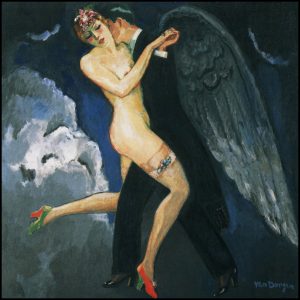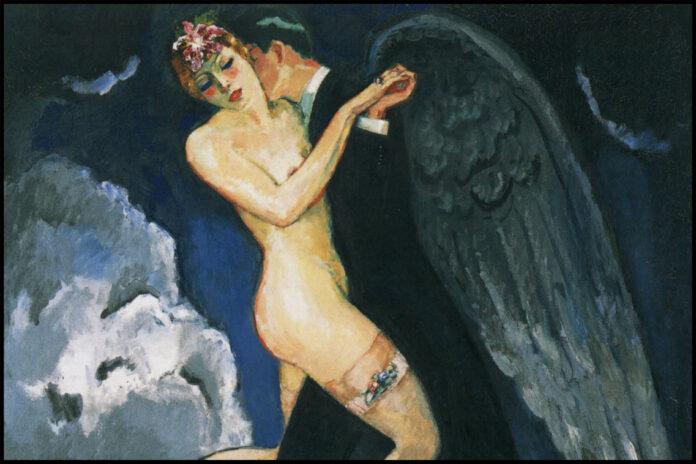The ancient red rose can be today the symbol of a lost world which cannot be found anymore. This nostalgia resembles the one of the ancient tanguero of Buenos Aires, aware of the ineffability of the fleeting moment. Nostalgia was, in fact, the feeling that the emigrant felt throbbing within him. Years after of the departure, this feeling induced the emigrant to seek a memory that more often than not proved to be disappointing, because of the impossibility of finding again that abandoned world, which he “recreated” in the atmospheres of tango.

This imagery becomes a metaphor for creation: the artist (like the tanguero) expresses the throbbing nostalgia-lack, which doubles in the “closed house” of one’s expression. His Promethean arrogance has the same divine nostalgia of a street poet: “Life goes away, it goes away and it doesn’t come back, the best thing is to enjoy it (…) I want to die with me, without confession and without God, crucified to my pain as embraced by grudge “.
The lyrics of his songs narrate memories, the land and a distant woman, lost youth and of course love, even the mercenary one. In fact, tango was born in the borders and slums of the suburbs of Buenos Aires, against the official culture. Its primary motion is the continuous projection of the past, made by mind and heart in order to forget the present.
Tango is not just music: it is above all poetry, whose essence lives darkly within us, as the soundtrack of a flowing existence. In the 1930s, Borges argues that the true poetry of our time would have been contained in the texts of the tango: an affirmation that has its confirmation in the texts that sing it. This dance, it has been said, may represent a final landing place for cursed poets.
The tango has influenced, with its poignant and erotic meaning, the languages of creation: as in painting. The tangueros clothing influences cultures and historical periods with its characterizing accessories: the vest which the male dancer wears with style; the stiletto heel of the woman dancer is a seductive icon on the verge of fetishism.
The provocation and licentiousness of tango’s origins were subsequently “purged” to gain access to the exclusive salons of the bourgeoisie: in Paris as in Buenos Aires, also overcoming the papal condemnation. In this sense, a letter dated 11 January 1914 by Marinetti entitled “Down with tango and Persifal” denounces the bloodthirsty of this dance with its delirious cadences.
Rodolfo Valentino, illustrious emigrant born in Castellaneta (Taranto) in 1885, arrived in America in 1913. He makes this dance known in the world, entering the scene dressed as a gaucho, in 1921 in Hollywood, to interpret a bold and overwhelming tango in “The Four Knights Apocalypse”. The disturbing Argentine dance thus established itself in Hollywood, conquering the young film industry. Its legend belongs to silent cinema, and proposed again in several films: including Valentino (1978) by Ken Russel, played by the great Russian classical dancer Rudolf Nureyev who proves to be an intense performer.
I don’t know if the alchemical red rose can still live – today – in the plurality of tangos danced throughout media and commercially widespread, continually redefined in its steps. Probably the ancient essence of tango, which “contains within itself a secret, like everything which is authentic” (Jorge Luis Borges), is perhaps now lost. This melancholy consideration can lead to the hypothesis that today, among the many craftsmen in love with its exterior adornments, an ancient tango danced by poets and soul artists can “re-emerge”.
I intend to present this hypothesis in future events.








